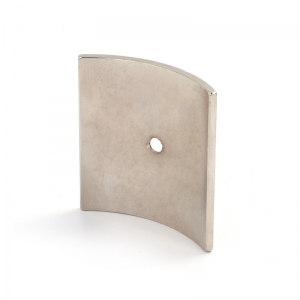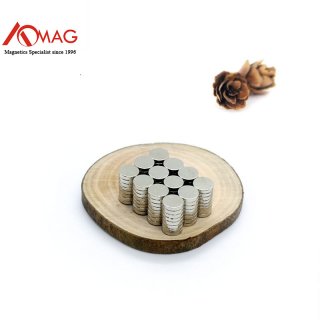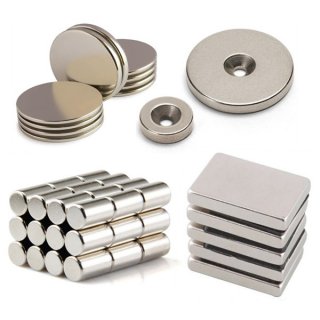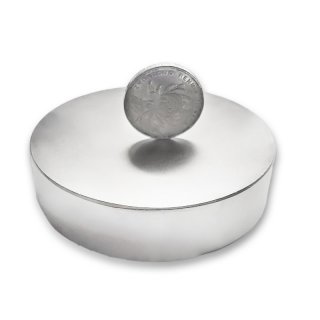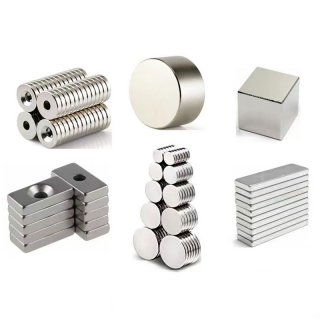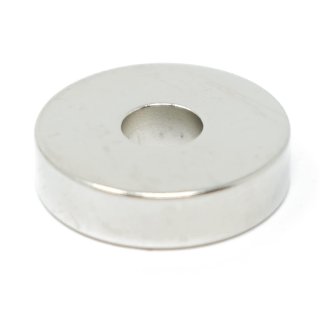AOMAG also provides Neodymium magnets Patents in full compliance with the law.
Neodymium magnets suppliers in the United States, Canada, Europe, and Southeast Asia are required by law* to pay a license fee to the current patent holders (Sumitomo Special Metals Corp. & MQI). Collectively known as Rare Earth magnets, Neodymium Iron Boron (NdFeB) and Samarium Cobalt (SmCo) magnets are alloys of the Lanthanide group of elements. Rare Earth magnets are the most advanced commercialized permanent magnet materials today. NdFeB magnets are available in a number of different grades that span a wide range of properties and application requirements.
NdFeB magnets are available in sintered as well as bonded forms. The bonded form of the material can be produced with close tolerances off tool, with little or no finishing required. The energy product of the bonded form is much lower than that of the sintered form - up to 10 MGOe. The sintered form usually requires some finishing operations in order to hold close mechanical tolerances.
NdFeB magnets are brittle (though not as brittle as the SmCo types), and machining operations should be performed prior to magnetization, using diamond tools. We are equipped to fabricate these materials to blueprint specifications.
All NdFeB magnets, except the bonded NdFeB B10N material, are anisotropic, and can only be magnetized in the orientation direction. B10N material is isotropic and can be magnetized in any direction, and with multiple poles, although special magnetizing fixtures are required for this. In general, magnetizing fields of about 30 KOe are required to saturate NdFeB magnets.
Manufacturing Methods
NdFeB magnets are manufactured in the 4 following forms:
Sintered - fine NdFeB powder is compacted in a die and then sintered, fusing the powder into a solid material. There are 2 forms of pressing: die pressing (which involves a hard die into which the powder is placed and then pressed), and isostatic pressing (involving a special "rubber" die into which powder is placed and then pressed with equal force in all directions on the powder). Die pressed parts are usually made smaller than isostatically pressed parts. Although the magnetic properties of isostatically pressed parts are higher, the uniformity of magnetic characteristics is usually lower than that of die pressed parts. Sintered parts normally need some finish machining in order to meet final tolerances.
Compression Bonded - this is a technique whereby a special form of NdFeB powder is blended with a plastic carrier material, die pressed and then heated. Parts made in this way can be of complex shapes and come off the tool with close tolerances, requiring no further finish machining. They have lower energy products than sintered materials - in the range of 10 MGOe. The Bonded NdFeB materials are isotropic - i.e. they can be magnetized in any direction.
Injection Molded - NdFeB powder is blended with a plastic material and injection molded. The resulting parts have energy products in the 5 MGOe range, but can be made with extremely intricate shapes.
Extruded - though not popular at present, NdFeB based flexible magnets can be made by binding NdFeB powder with a carrier material and extruding the material in sheet or strip form. Energy products up to about 6 MGOe have been achieved in this way.
We are able to manufacture metal and other components of finished sub assemblies using our CNC machining facilities.
Assemblies can be fabricated by adhering magnets with adhesives to suit a range of environments, by mechanically fastening magnets, or by a combination of these methods. Due to the relatively brittle nature of these magnet materials, press fits are not recommended.
When multiple magnets are assembled in repelling positions, it is advisable to use mechanical fastening in addition to adhesives, since if adhesives were to give way, repelling magnets may dislodge and endanger personnel using them. Our design engineering team will be happy to assist you in designing housings for your magnet assemblies.
The corrosion resistance of SmCo is considered good while that of NdFeB is considered poor. Painting, coating, or plating is therefore highly recommended for NdFeB. Plating NdFeB is a difficult process, and commercial plating houses are unlikely to be able to achieve plating with good adhesion. Nickel, Zinc, or Tin plating provides good corrosion resistance for NdFeB magnets. We are also able to cadmium chromate or aluminum chromate plated NdFeB using vacuum deposition techniques. A variety of organic coatings have also been successfully developed for NdFeB, exhibiting good corrosion resistance characteristics. For especially harsh environments, it may be advisable to use a combination of coating techniques, or to encapsulate the material in a sealed housing.
Some machining operations may be performed on NdFeB materials using carbide tools, although surface finishes thus obtained may be less than optimal. In general, NdFeB magnets must be machined using diamond-grinding techniques.
We are fully equipped to machine these materials to your blueprint specifications.
Bonded NdFeB is easily machined. Coolants must be used while machining this material in order to avoid spontaneous combustion of powder. Machining this material removes a layer of protective coating, and re-coating for corrosion resistance may be necessary.
All Rare Earth magnets require extremely high magnetizing fields and special consideration must be given to this when designing complex assemblies, if it is intended to magnetize after assembly. Consult us if you foresee any problems.
Rare Earth materials are mechanically weak, and magnetically very strong. They must therefore be handled very carefully to avoid damage and injury to personnel handling the magnets. Receiving and assembly personnel should be warned about the dangers of handling magnetized Rare Earth magnets.
Isotropic bonded NdFeB materials can be magnetized in any direction, or with multiple poles. Special magnetizing fixtures are required in order to achieve multiple pole magnetization. Such multiple pole fixtures may cost several thousand dollars depending on complexity of design and production rate requirements.
Magnetic properties of NdFeB deteriorate rapidly above about 130°C, depending on the grade of material, and the permeance coefficient of the magnet in operation. The higher the permeance coefficient the magnet operates at, the higher the temperature it will withstand. High Hci NdFeB materials operating at a high permeance coefficient can operate to about 210°C.
Holding systems requiring very high holding forces, high field yoke magnets, high performance stepper, DC, servo, linear, and voice coil motors, magnetic bearings, magnetic couplings, loudspeakers, Halbach arrays, headphones, microphones, magnetic separation, instrumentation, switches, relays, magnetic resonance, sputtering, vacuum deposition, charged particle beam guidance, particle accelerators, undulators, wigglers and others.
* Warning: Unlicensed magnet manufactures often utilize substandard raw materials and manufacturing methods which lead to product failures and inconsistent quality. Purchasing unlicensed neodymium magnets can also result in a lawsuit from the current patent holder.






